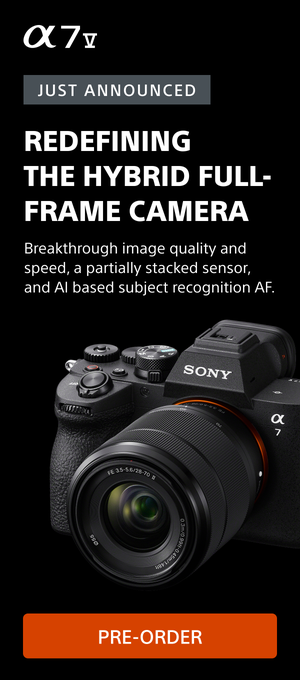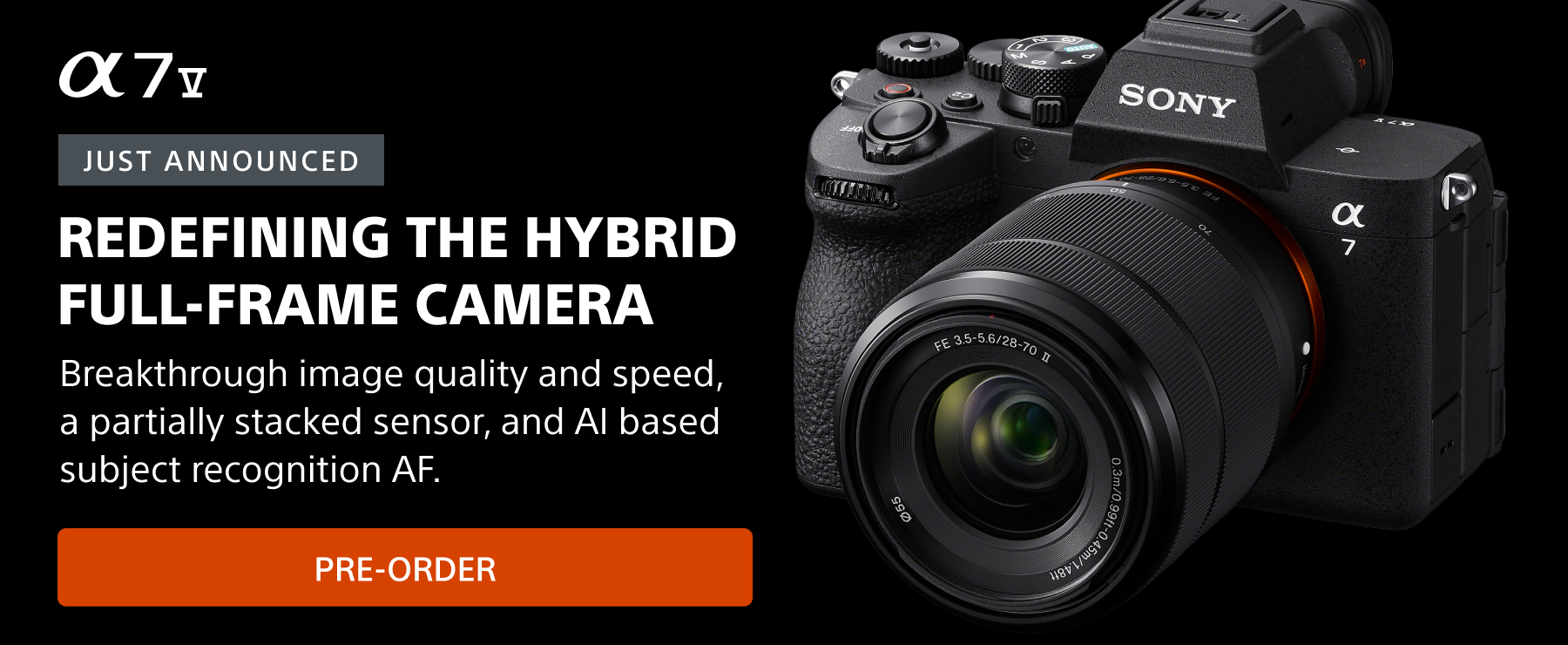An accessory microphone will help you level up the audio that goes into your videos and boost your content to the next level. In this video as content creator and Sony Artisan Miguel Quiles takes a look at the various microphones in the Sony lineup, sharing which ones he thinks are best in certain situations and demonstrating the sound of each paired with his Sony Alpha 7CR so you can choose which is best for you. Explore all of the Sony microphones for vlogging, interviews and more HERE.
Sony ECM-G1
The Sony ECM-G1 is the most compact shotgun microphone that Quiles explores in the video. “It’s a nice step up if you’re looking to move on from using the internal microphone built into your camera,” he explains.”This internal microphones is omni-directional so it picks up audio from all around the microphone.”
Quiles demonstrates the difference between the sound of the camera’s internal microphone and that of the Sony ECM-G1. “One of the big advantages of this microphone is that you could simply connect this to your Sony camera with the multi-interface shoe and automatically get better audio.”
This Sony ECM-G1 has a large diameter microphone capsule with a super cardioid pickup pattern, which means that it picks up audio directly in front of it and it rejects audio coming from other angles. Quiles explains how this alone gives you a big step up from your built-in audio in your camera. What's really nice is when you add this microphone to your camera, everything is automatic. You don’t have to worry about making adjustments to the audio.
“If you’re wanting to step up your audio from that built-in audio that you’re getting from your camera,” Quiles says, “this is an excellent entry-level option to get you started without adding much to your overall camera setup.”
Sony ECM-B10
The Sony ECM-B10 is a step up from the Sony ECM-G1 in several ways. Instead of capturing audio with a single capsule, this microphone has four different capsules that can be used to capture audio in three different ways. All of these options are displayed on a switch on the back of the microphone.
Quiles explains each of these pickup pattern options and when you might want to use them. “The first option is the super-directional pickup pattern, which is what you want to use for vlogging or interviews where you’re capturing audio from a single person that’s in front of the camera. If there are more people in front of the camera having a conversation with one another, you might want to use the second option which is the unidirectional pickup pattern. It captures a wider range of audio in front of the microphone which makes that type of recording situation really easy. The last option is the omnidirectional pickup pattern, which captures audio equally from all directions. This is great for recording ambient sounds from all directions using the multiple capsules on the B10.”
Another feature of the Sony ECM-B10 is the mount, which is made to suppress noises that are caused by vibrations and shock. It’s also dust and moisture resistant, so it’s a great option for vloggers shooting outdoors. “Just like the G1, you get cable and battery-free operation with several Sony cameras thanks to that multi-interface shoe,” Quiles explains. “If you want to have a single microphone on hand that can record quality audio in a variety of situations, this is a great step up from the audio that you capture on your camera alone.”
Sony ECM-B1M
This microphone is the next step up in the lineup, building on several of the features found in the Sony ECM-B10. The first biggest difference? The Sony ECM-B1M has eight high-performance microphone capsules. This will give you excellent quality audio and the technology you need to choose the best pickup pattern for your recording situation.
Just like with the Sony ECM-B10, you can choose from super-directional, unidirectional or omnidirectional pickup patterns – but that’s not all. “In many ways you’re getting similar functionality to the B10, but with four additional mic capsules which give you even better quality,” Quiles explains. You can also use this mic without any kind of cables or batteries, and you get clean digital audio when you use it with select Alpha series cameras.
Sony ECM-M1
The Sony ECM-M1 is the world’s first microphone that allows you to select from eight different recording modes. “The ECM-M1 has four high-quality microphone capsules, and is light and compact,” Quiles explains. “You have three of the same pickup patterns that are found on the B10 and the B1M microphones, along with five more that you could use for even more recording situations.”
Quiles says that he personally likes that they made it easy to understand what each mode actually does. “For example, this mode here is the super directional pickup pattern that we saw in the last two microphones. But this one actually captures audio from behind the microphone. This is great for those situations where you’re recording something and you want to narrate what’s happening from behind the camera.
He continues, “In an interview situation, you could choose that super directional pickup pattern from the front and back of the camera, which again is great for interviews. And you can even separate which channel each person’s audio is being picked up on with this next mode. It picks up audio from the front and it saves it on the left channel, and the audio from behind the camera gets recorded on the right channel.” This gives you even more control of your audio, because you can raise or lower the levels from each channel in post-production.
Sony ECM-W2 & Sony ECM-W3
When it comes to microphones, the closer you can get the microphone to the source of the audio, the better it’s going to sound. That’s why certain video projects require something like a wireless lavalier-style microphone. Two excellent options are the Sony ECM-W2, with one transmitter, and Sony ECM-W3, which has two transmitters.
“Basically both work in the same ways,” Quiles explains. “With this microphone you could simply clip this onto your shirt, your jacket, or whatever it is that you’re wearing, and you can capture some excellent quality audio. What’s wild is that you could be up to 650 feet away from your camera, and it still captures excellent sound thanks to its Bluetooth connection.” The transmitter also has a microphone input if you want to attach a wired lavalier to it.
“One of the really cool things with the W2 and the W3 series of wireless lavaliers,” Quiles explains, “is that, if you are in a situation where you’re outdoors and let’s say it’s just you vlogging and talking to the camera like I’m doing right now, the ECM-W2 would be just fine. But, there are certain scenarios where maybe you want to mic up two different people, maybe it’s a wedding or an interview of some sort, you want to have control and actually have both people wired separately. You can totally do that with the ECM-W3 because it comes with those two receivers.”
Sony ECM-S1
There’s been an explosion in the number of livestreams and podcasts in the world, and while there are plenty of microphone options on the market, Quiles says the Sony ECM-S1 is absolutely perfect for this recording situation. “When it comes to livestreams and podcasts, you’ve probably seen this style of microphone, but this one is very different,” Quiles explains. “The ECM-S1 connects to your camera wirelessly using this wireless receiver that connects to the multi-interface shoe on your camera. And thanks to the three 14mm capsules built into it, you’re getting high-quality sound recording that’s going to make your content sound its very best.”
On the back of the Sony ECM-S1, you have a switch with three pickup patterns to choose from, plus the noise and low cut filters. There’s also a built-in headphone jack to use to monitor your audio as well as a USB-C port. “Let’s say that you want to record audio on your laptop or your smartphone, you can do exactly that,” Quiles explains. “Just connect the microphone with the USB-C cable, and you’re all set.”
The Sony ECM-S1 is a lightweight option that supports several mounting and attachment options. It can even be used outdoors. “It does an awesome job of capturing high-quality audio for livestreams, for podcasts, performances and so much more.
Explore all of the Sony microphones for vlogging, interviews and more HERE.



